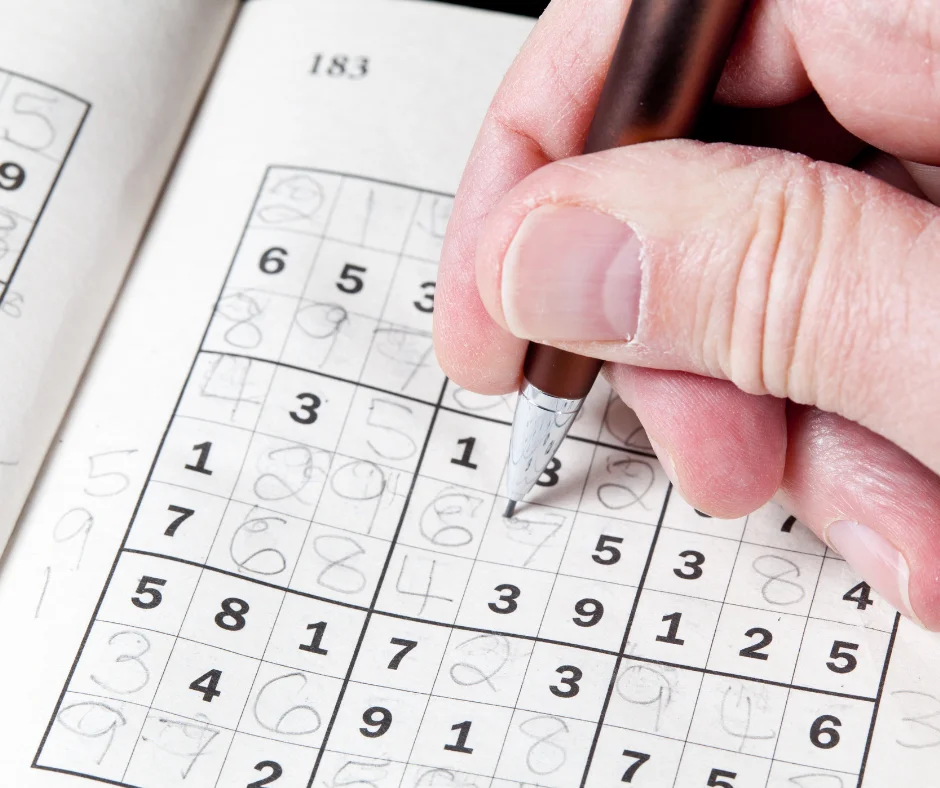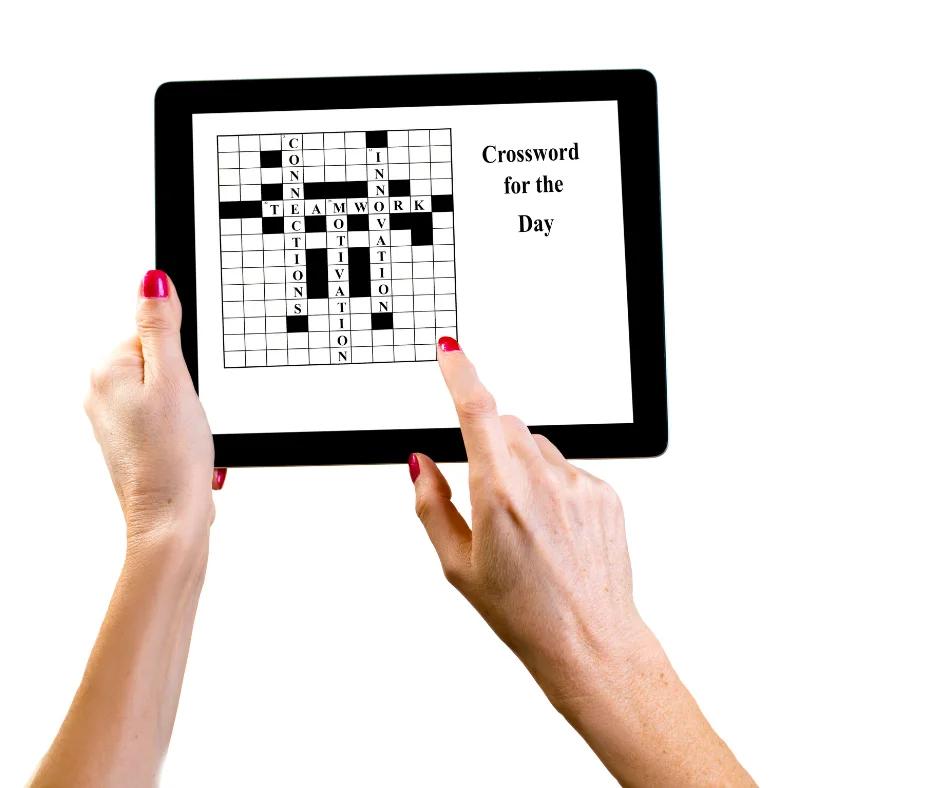Escape rooms are built on puzzles and clues that you must solve and find within the room to make your escape within the time limit. Knowing what to expect while you are there will enable you to solve the puzzles faster and escape the room. There are some common types of escape room puzzles you will find everywhere.
Let’s review some common types of puzzles you will find in escape rooms in Mississauga.
1. Lock Escape Room Puzzles

Lock puzzles are a staple in escape rooms and involve various types of locks that players need to unlock using clues and information scattered throughout the room. These puzzles often require players to decipher codes, find hidden keys, or manipulate physical mechanisms to access new areas or retrieve important items.
Here are the different types of escape room puzzles related to locks you can expect to find:
Combination Locks
These are the most recognizable types of lock puzzles. You need to discover the correct numeric sequence to open the lock.
Clues can be hidden in the room and might involve numbers found in paintings, book spines, or other obscure places. You and your team must use logic and observation to determine the combination.
Key Locks
Key locks involve finding physical keys hidden throughout the room. These keys can be hidden in books, under cushions, behind pictures, or even within other puzzles. Players must search meticulously and think creatively to locate all the necessary keys to progress.
Digital Dial Locks
These are also known as rotary locks and feature a series of rotating discs with digits on them. Players must align the discs according to clues to form the correct combination. These locks can be particularly challenging due to the precise alignment required.
2. Physical Manipulation Puzzles

Physical manipulation puzzles require players to interact directly with objects in the room, manipulating them in various ways to uncover clues, solve challenges, and progress in the escape room. These escape room puzzles often involve assembling objects, arranging items, or manipulating mechanisms in a specific manner.
There are various escape room puzzles within this category, which include the following:
- Jigsaw puzzles: It involve assembling scattered pieces to form a complete picture or message. These puzzles can be more challenging by providing few visual cues or mixing pieces from different puzzles.
- Mechanical puzzles: Such puzzles require players to manipulate physical objects or pieces to achieve a specific goal. This might involve assembling a broken item, arranging gears to create a functional mechanism, or solving a puzzle box with moving parts.
- Interlocking puzzle: This might involve aligning symbols, pieces, or objects in a specific arrangement.
- Tangram puzzle: It involves arranging geometric shapes to create specific patterns. Players must fit the shapes within an outline to form the desired image.
Such puzzles offer a rich and interactive experience to all users. You must take a more hands-on approach as you decipher these to move forward and escape the room.
3. Code And Cipher Puzzles

Encoding and decoding messages are common in escape room puzzles to reveal hidden information. Typically, these puzzles tap into the intrigue of secret communication methods and challenge players to decipher codes, languages, and patterns.
Morse code is one of the most common examples of such a puzzle that most people already know. It uses a system of dots and dashes to represent letters and numbers. You must translate the dots and dashes into meaningful text to help you escape the room.
On the other hand, many escape rooms in Mississauga also use substitution ciphers. You must deduce the substitution key to decipher the encoded message during these puzzles. You can replace letters and symbols in this puzzle with other numbers, letters, or symbols.
4. Logic And Math Escape Room Puzzles

You will love solving these escape room puzzles if you have incredible mathematical and logical skills. Such puzzles come in various forms and levels of complexity, testing your ability to analyze information and draw logical conclusions. The best part is that many logic and math puzzles escape rooms can add to the experience.
Some of them include the following:
Sudoku Or Grid-Like Puzzles
These puzzles require you to fill a grid with numbers according to specific rules. Sudoku is a well-known example where each row, column, and smaller grid (usually 3×3) must contain all numbers from 1 to 9 without repetition. Similarly, you can get any such puzzle during the escape room.
Math Equations
Remember that these equations will not be too challenging because they are created for people with all skill levels to keep the escape room friendly to everyone. However, you must solve mathematical equations, sequences, or patterns to find the missing value or discover a hidden message. So, make your math skills shine to solve these puzzles as quickly as possible.
Mathematical Riddles
These escape room puzzles keep the experience interesting and immersive for all players. Mathematical riddles are there to present mathematical challenges playfully and creatively. Solvers need to think outside the box and apply mathematical concepts unconventionally.
5. Pattern Recognition Puzzles

Patterns are all around us. You will recognize a pattern that provides a sense of order everywhere you look. Nature also has patterns that it follows to create a beautiful world for us that passes through our senses.
Pattern recognition escape room puzzles require players to identify and decipher patterns within the information provided. These puzzles often involve observing, analyzing, and recognizing recurring sequences, shapes, colors or sounds to unlock clues and progress in the game.
Some of these puzzles can include the following:
- Sound patterns: It involves recognizing and interpreting sequences of sounds or tones. Players might need to listen carefully to audio clues, music, or spoken words to deduce the correct pattern.
- Color patterns: These puzzles require players to identify and replicate color sequences or arrangements. These patterns might be found in paintings, objects, or even lighting effects in the room.
- Light patterns: Light flashes or changes in light will cause a pattern you must identify in this puzzle. For example, these can be illuminating symbols, changing colors, blinking lights, etc.
The escape room can also have numbers, symbols, shape sequences and patterns. However, these patterns will depend on the type of escape room you have chosen, its difficulty level, and how it has been designed for players.
6. Observation Puzzles

If there is one skill that is constantly tested in escape room puzzles, it is the skill of observation. You must carefully observe your surroundings to see any hidden information or clues that might enable you to escape quickly. Take a look, and notice even the most subtle hints and connections within the room.
Such puzzles are usually not too difficult and can include the following:
Hidden Objects, Messages, Or Clues
Technically, everything is hidden within an escape room, but hidden objects, messages, and clues are there to solve clues and progress. These are usually hidden within plain sight in the escape room. You must carefully search the entire room for clues and escape.
Spotting The Difference
You have played this observation game many times in your childhood, and it is relevant even as you grow. You will be provided with two similar images, and you will have to spot the differences between the two. These are usually subtle, and the differences can lie in colors, shapes, etc.
UV Light Or Invisible Ink
Some escape room puzzles incorporate the power of UV light or invisible ink to reveal hidden information to you. You must use the UV light provided to you within the room to uncover any hidden information. This is why you need to look for clues everywhere and in all objects to move forward and escape.
7. Technology-Driven Escape Room Puzzles

Finally, escape room puzzles also utilize technology to create exceptional puzzles for you. Escape rooms use electronic devices, digital interfaces, and more. Some common types of technology-driven puzzles include the following:
- Digital codes: Players interact with digital keypads, touchscreens, or virtual keyboards to input codes, passwords, or commands that unlock doors, compartments, or reveal information.
- Augmented reality puzzles: AR technology overlays virtual elements onto the real-world environment using devices like smartphones or tablets. Players might use AR apps to reveal hidden clues, messages, or interactive puzzles.
- Sound and audio puzzles: Players interact with audio devices or apps that play specific sounds or tones. Deciphering these sounds or combining them with other information can lead to solutions.
Technology-driven puzzles can be incredibly engaging for players. If you love using technology in escape room experiences, be sure to find ones that use such engaging experiences for users.
Final Thoughts
These are the seven most common escape room puzzles you will find in almost all escape rooms. If you are looking for some of the best escape rooms in Toronto with various puzzles, be sure to opt for our escape games.
HintHunt has served thousands of people till now that keep coming back for the escape room experiences. For more information regarding our services, please contact us or fill our booking form.

